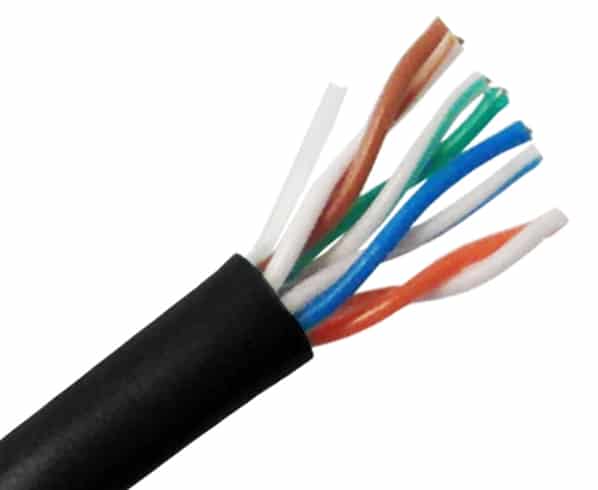Definition of Unshielded Twisted-pair (UTP) cabling on Network Encyclopedia.
What is Unshielded twisted-pair (UTP) cabling?
Unshielded Twisted-pair Cabling, or UTP cabling, is Twisted-pair cabling with no internal shielding. The outer insulating jacket protects the cable from physical stress or damage but does not shield the cable from electromagnetic interference (EMI). Unshielded twisted-pair cabling (UTP) is the most common form of network cabling for workgroups and departmental local area networks (LANs) because of its low cost, flexibility, and good performance.

UTP cabling has an impedance of approximately 100 ohms and comes in various grades or categories based on data transmission capabilities, as shown in the following table. Category 5 cabling is the most popular form of UTP cabling in 10/100-Mbps Ethernet workgroup or departmental LANs. No agreed standards exist above category 5, but many manufacturers offer UTP cabling certified for transmission rates up to 350 MHz or higher (see table below for the latest standard in UTP/STP cabling).
UTP/STP Cabling Categories
| Category | Use (Bandwidth) |
| Category 1 | Analog voice-grade (0.4 MHz) |
| Category 2 | Older terminal systems up to 4 Mbps (4 MHz) |
| Category 3 | Digital transmissions up to 10 Mbps (16 MHz) |
| Category 4 | Digital transmissions up to 16 Mbps (20 MHz) |
| Category 5 | Digital transmissions up to 100 Mbps (100 MHz) |
| Category 5e | Digital transmissions up to 1 Gbps (100 MHz) |
| Category 6 | Digital transmissions up to 10 Gbps (250 MHz) |
| Category 6a | Digital transmissions up to 10 Gbps (500 MHz) |
| Category 7 | Digital transmissions up to 10 Gbps (600 MHz) |
| Category 7a | Digital transmissions up to 10 Gbps (1000 MHz) |
| Category 8 | Digital transmissions up to 40 Gbps (2000 MHz) |
| Category 8.2 | Digital transmissions up to 40 Gbps (2000 MHz) |
TIP
To ensure that category 5 UTP cabling performs effectively, you should also use certified category 5 wall plates, connectors, patch cables, and patch panels. The patch panel or wall plate connections should be untwisted no more than 0.5 inches; also try to keep cabling away from fluorescent lights, motors, and other sources of EMI. Do not bend the cable sharply – the radius of a bend should not be less than 10 times the diameter of the cable. Finally, avoid pulling cable wraps too tightly or crushing the cables in any way.